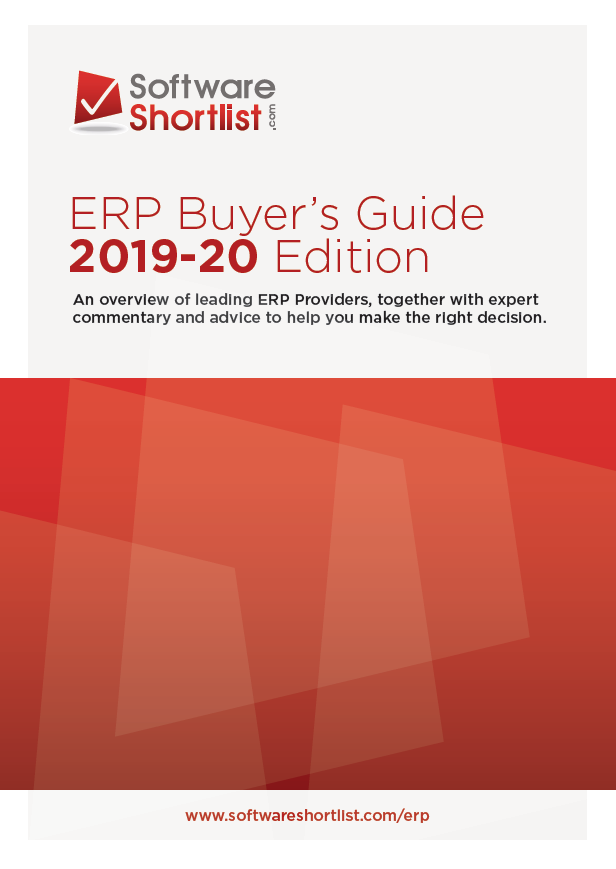 Selection an ERP solution is one of the most important decisions a business can make. Panorama offers up some evaluation criteria…
Selection an ERP solution is one of the most important decisions a business can make. Panorama offers up some evaluation criteria…
If you’re a large, complex organisation evaluating ERP software, you’re likely considering Tier I vendors like SAP, Oracle and Microsoft Dynamics. How do you decide between these three viable options when internal bias and vendor enthusiasm threaten to sway you?
The best way to evaluate ERP systems is to weigh the strengths and weaknesses of each according to the following six criteria.
ERP Evaluation Criteria
- Deployment Options
Many ERP vendors have a flagship product where they invest most of their R&D. It behooves you to know which product this is and how it can be deployed. For example, Oracle ERP Cloud can only be deployed in the cloud. SAP S/4HANA, on the other hand, has multiple deployment options.
Most Tier I ERP vendors are heavily investing in cloud technology, but functionality is still limited compared to many on-premise solutions. This doesn’t mean every organisation should select an on-premise solution. In the future, your ERP vendor may stop developing or even supporting their on-premise products. At that point, you’ll have to transition to the cloud, which is more complex and time-consuming than vendors claim.
While vendors are heavily investing in their cloud offerings and providing more robust functionality, the novelty of the cloud is still intimidating to many organisations. No one wants to be among the first to take the leap. They want a long list of references from companies of similar size and industry. Whether you’re evaluating SAP, Oracle or Microsoft Dynamics, their cloud implementation resume may be smaller than you expect.
- Scalability
Software scalability refers to a system’s ability to handle an increasing amount of work and increasing number of users. SAP, Oracle and Microsoft Dynamics are built for large organisations with complex operations, but do you know which products and deployment models can continuously scale to support your growing business?
For example, if your customer base increases, the software should be able to handle an increasing number of users and transactions. It should continue to provide real-time data despite an increase in data volume.
Scalability can be expensive for some on-premise solutions. You might need to purchase additional servers to support the increased workload. It’s important to ask vendors what their products can support out-of-the-box, and if they can be scaled.
- Technical Fit
SAP, Oracle and Microsoft Dynamics each have different functional strengths that make them well-suited for certain industries. While industry focus is a strong indicator of technical fit, your business requirements should have the final say.
If you take the time to map your processes and define your business requirements, you can ask vendors to demonstrate specific functionality. You’re not expecting too much by asking a vendor to demo their ERP system based on your business requirements rather than presenting a canned sales demo.
While no ERP system can address every possible business requirement, you should look for a system that addresses your highest priority requirements. In addition, you should determine which of your processes should be standardised based on ERP functionality, and which processes are competitive differentiators that could require software customisation.
Sharing your business requirements with vendors and allowing access to subject matter experts ensures vendors fully understand your business.
- References
Vendors will make many claims about their system’s capabilities and ease of use. If you want to validate these claims, you should request references, so you can ask previous customers about their experience. What functionality did they implement, and did they achieve the desired results? Did the vendor offer ongoing support?
References should be from organisations similar to your own that have implemented similar functionality. If you’re considering cloud ERP, ask for references that have deployed their software in the cloud.
- Return on Investment
While total cost of ownership is a common consideration during organisations’ ERP evaluations, return on investment is even more important. While Microsoft Dynamics may be less expensive then SAP or Oracle, that doesn’t necessarily mean it will save you money in the long run and deliver a high ROI. If you select an ERP system based on your organisational vision rather than total cost of ownership, you’ll realise more business benefits.
Developing a business case will help you quantify the benefits you expect. This will guide you in improving your processes and defining your business requirements. Your ERP system will be more likely to deliver a high ROI if it’s configured based on optimised processes.
If you’re comparing the ROI of several different ERP systems, you may find Panorama’s ROI Calculator useful.
- Product Viability
Do you know the long-term outlook of the ERP solutions you’re evaluating? While SAP, Oracle and Microsoft Dynamics aren’t likely to go out of business any time soon, they may stop supporting certain products. It’s also worth knowing where a vendor plans to invest their R&D in the future, as it’s your responsibility to select a product that will support your organisation in the long-term.
You should conduct industry research to determine if a software product is on par with its competition. If not, the vendor may be planning to discontinue the product. In the short-term, product stagnation hurts your business as you’ll spend a fortune on customisation just to remain innovative.
Other Considerations
Before evaluating ERP software, you should define a digital strategy. What are the pain points of your current IT infrastructure, and what needs to change to support your organisational objectives?
While new technology can bring much needed change, the only way to enable long-term, large-scale change is through business process reengineering and organisational change management. Even if you select the best solution from among SAP, Oracle and Microsoft Dynamics, you won’t transform your organisation unless you enable change by focusing on your people and processes.
Check out our Best Practise ERP Evaluation webinar to get more information from a panel of experts on what works, and what can be career limiting when evaluating and implementing ERP.
Source: This article was originally sourced from Panorama Consulting Solutions



